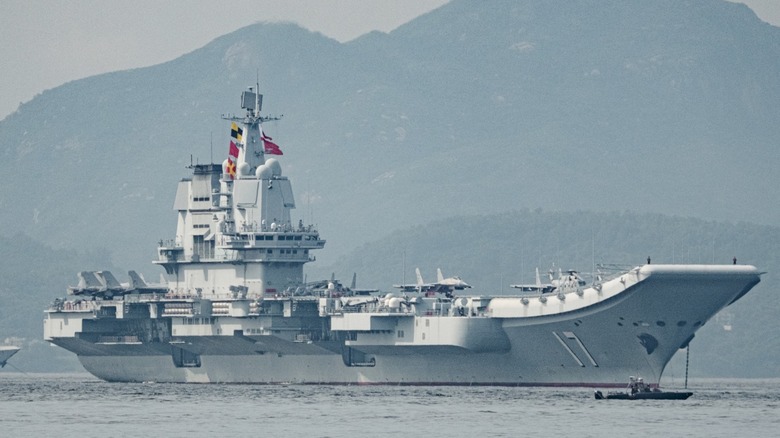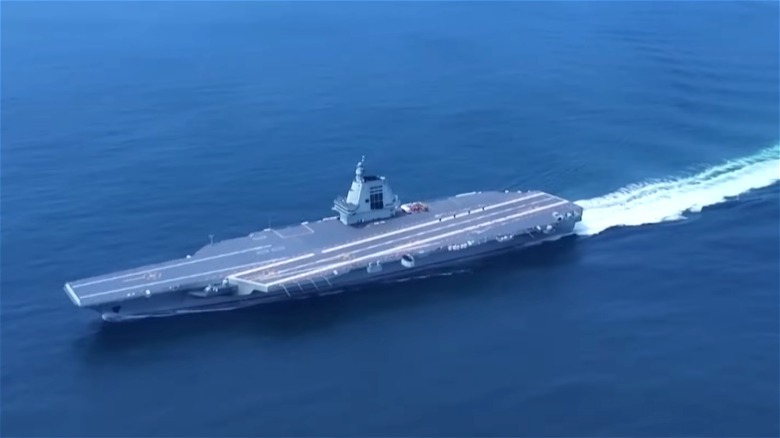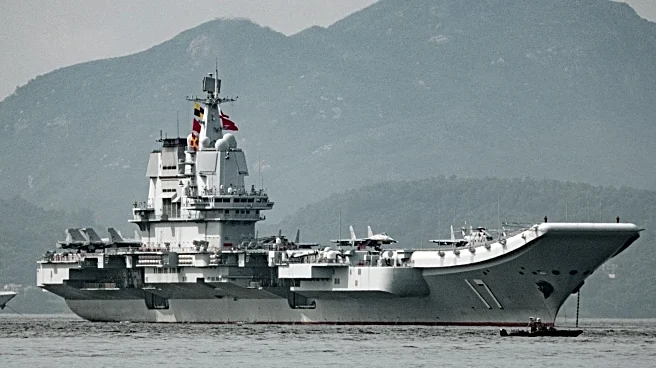
China is quickly building up its navy, with the People's Liberation Army Navy (PLAN) estimated to have more than 370 vessels in its fleet. Aside from the number of ships that it operates, the PLAN is also increasing its firepower and power-projection capabilities by operating three aircraft carriers: the Liaoning, which is a refurbished Soviet-era ship originally laid down in 1985; the Shandong, which is its first homegrown carrier and features a ski-jump ramp instead of a catapult; and the Fujian,
a turbine-engined carrier that's considerably smaller than the U.S.' Gerald Ford-class but uses a similar CATOBAR (catapult-assisted take-off but arrested recovery) system to that found on U.S. Navy carriers.
The Liaoning was originally meant to serve the Soviet Union and was first laid down in a Ukrainian shipyard as the Varyag. A Chinese businessman then bought it, ostensibly to turn it into a floating casino, but turned it over to the Chinese military as soon as it arrived on Chinese shores. The ship was then refurbished in the Dalian Shipyard, located in Liaoning province in Northeast China, next to North Korea. This was also where the Shandong was built. However, the country's third aircraft carrier, the Liaoning, was built in and launched at the Jiangnan shipyard in Shanghai.
The Dalian shipyard is owned by the Dalian Shipbuilding Industry Company (DSIC), which is a subsidiary of the state-owned China Shipbuilding Industry Corporation (CSIC). Conversely, the CISC directly owns the Jiangnan shipyard. This means the Chinese government builds its own ships through state-owned companies.
Read more: What Engines Are In The SS United States?
China's Future Aircraft Carrier Plans

The Fujian is still in the final stages of its preparation before entering service, with the carrier expected to be commissioned by September 2025. China isn't resting on its laurels, though, and is reportedly already working on a fourth carrier. This ship is expected to be nuclear-powered, making it different from the first three ships that use conventional propulsion. Aside from that, it's expected to be larger than the Fujian and might even compete against American supercarriers when it comes to size and capabilities.
There are reports that the PLAN is aiming for a six-carrier fleet by the 2030s, which is just about half of what the 11-carrier-strong U.S. Navy operates. China is also building amphibious assault ships capable of launching VTOL jets and choppers, similar to the 31 such ships the U.S. Navy currently has. This should be enough for Beijing to challenge Washington, D.C.'s dominance in the Pacific, although it also has to deal with the Western nations' numerous allies that surround its waters.
China is quite secretive about its long-term plans, so there's no way of really knowing what ships it has in the pipeline and how many it wants in its entire fleet. But, at the very least, some experts suggest that the U.S. should assume that China will accelerate its naval growth, increasing its fleet in terms of numbers, tonnage, and capabilities.
Want the latest in tech and auto trends? Subscribe to our free newsletter for the latest headlines, expert guides, and how-to tips, one email at a time.
Read the original article on SlashGear.

